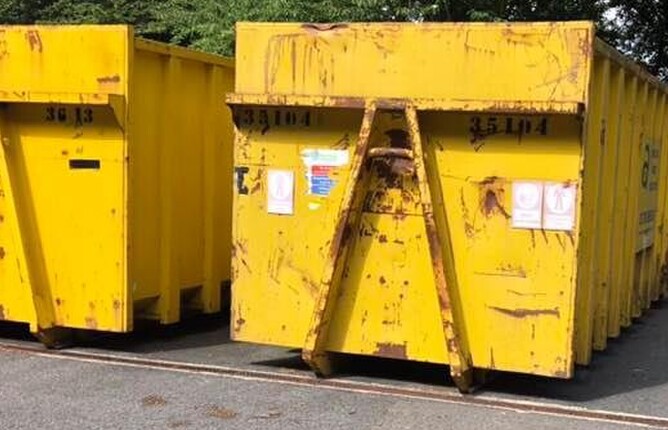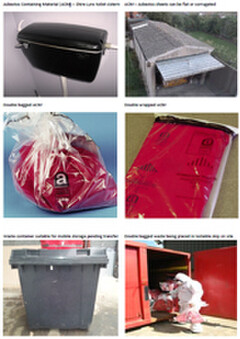Helping people understand the concept and purpose of an asbestos waste transfer station, as opposed to an asbestos landfill site, is proving harder than we thought. But its importance cannot be over estimated.
It is no accident that Asbestos has been banned from being added to products used in the UK since November 1999. This means that Asbestos Containing Materials (ACMs) are no longer permitted in the UK, even if they are manufactured elsewhere.
Until the year 2000 there were over 4,000 different Asbestos containing products manufactured - including floor tiles, artex and various cement products - which were used in all types of buildings. It is now a requirement that anyone who could potentially disturb these during their work, i.e. builder, plumber, gardener, electrician etc, has asbestos awareness training and current certificate.
Due to its extensive use between 1950 and 1985, people still come into contact with Asbestos containing products on a daily basis, be it in their places of work, homes, schools, shops, hospitals, restaurants etc, and provided these are in good condition and are not likely to be disturbed during the normal use of the building, the recommended action is to leave them undisturbed and manage them in place.
But what happens if it becomes necessary to remove an Asbestos containing product? This may be due to potential disturbance, hazard or refurbishment. Where does the waste go? With larger projects, where it is possible to use an asbestos skip, the process is fairly straightforward. Follow the approved codes of practice and place double bagged Asbestos containing waste in a lockable skip for transportation directly to a landfill site for disposal.
So, what happens with minor amounts of Asbestos containing waste, where the use of a skip is simply not practical or cost effective?
If, for example, you are a plumber stuck with an asbestos containing toilet cistern, where do you take it for safe and secure disposal?
If the item has come from a private domestic dwelling, it is sometimes possible for the householder to take the item to the local authority (LA) recycling and waste disposal site. But only if they accept private asbestos waste.
However, if the householder is unable to dispose of the item themselves and they pay for the waste to be taken away, the disposal becomes disposal of commercial waste.
Local Authority site
This is where an Environment Agency (EA) licenced transfer station is required and we are happy to confirm that ours has been permitted since 2014. Again, the Asbestos containing products are removed following the approved codes of practice but, rather than being placed in a skip, they are placed in a segregated compartment for transportation, usually a trailer or in a van. More information regarding how to use our facility can be found on the Waste Disposal page.
Upon arrival at the transfer station, a competent waste supervisor reviews the waste and approves all paperwork prior to monitoring any transfer. The double bagged and sealed Asbestos waste is then transferred from the van or trailer into a locked skip in a compound that is licenced and monitored by the Environment Agency. This ensures the site is run strictly in accordance with the Pollution Prevention Control regulations and any breaches would result in revocation of the permit. Unfortunately, the only alternative is that, until they can be taken to landfill, the bags stay in waste compartments in vehicles that can be parked anywhere.
Asbestos fibres have not been used in the UK since November 1999 so it must be understood that the transfer is of historic Asbestos containing products and not mined, raw, loose asbestos fibres that could become airborne if not controlled. Prior to disposal, all asbestos waste must be packed in United Nations approved packaging with a Carriage of Dangerous Goods (CDG) hazard sign and asbestos code information fully visible.
Asbestos related diseases kill more people than road accidents in the UK each year and the number is still growing. Deaths are estimated to peak between 2014 and 2018. If this is to be the only peak in asbestos related deaths, rather than the first of many, we all need to know what asbestos is and where we might find it, whether in the home or outside world.
Prevention is better than cure. Asbestos disease is not a thing of the past, it's a threat for the future. The more we raise awareness, the better the prevention of asbestos related illness will be. Increased awareness could result in an increase in disposal of damaged products and materials, so it follows that we needEnvironment Agency transfer stations to enable the rules and regulations to be met.
Without them, where will the waste go?


